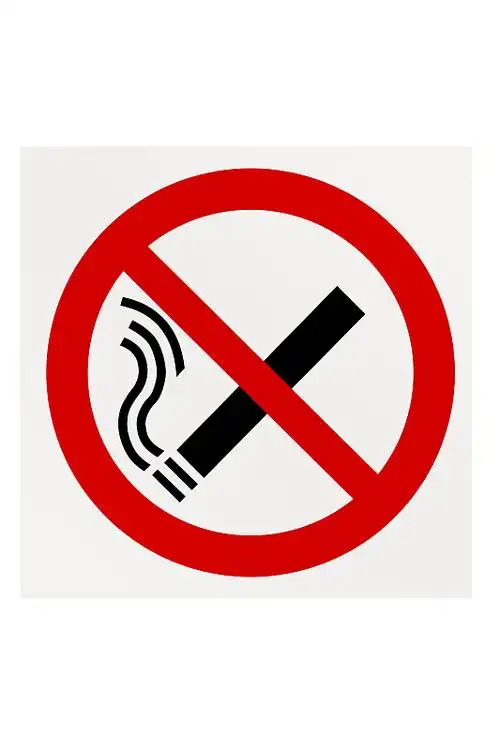If you're living with keratoconus, you've likely been given a list of recommendations to protect your eye health. You might have been told to avoid rubbing your eyes, to schedule regular check-ups, and to wear your specialty contact lenses as prescribed. But there's one crucial piece of advice that is increasingly supported by scientific evidence, yet often goes unmentioned: the critical importance of avoiding smoking. The connection between lighting a cigarette and the shape of your cornea might not seem obvious at first, but a growing body of research is drawing a direct and concerning line between the two. For individuals with this corneal condition, smoking is not just a general health risk; it is a potent accelerator that can speed up the progression of the disease, leading to a faster decline in vision and a greater likelihood of needing invasive interventions.
To truly grasp why smoking has such a detrimental effect, we first need to understand the delicate biological environment of the eye, particularly the cornea. The cornea is the clear, dome-shaped front surface of your eye. It's not just a window; it's a powerful lens that helps focus light onto the retina. For it to function perfectly, it must maintain its precise, rounded shape and crystal-clear clarity. This structural integrity is largely managed by a network of tiny collagen fibers, which act as the scaffolding for the corneal tissue. In a healthy eye, a careful balance exists between the natural processes that break down old cells and the processes that build new, strong collagen. This balance is maintained by a host of protective molecules and enzymes. In keratoconus, this balance is disrupted. The collagen becomes weak, and the cornea, unable to hold its shape, begins to thin and bulge outward into a cone-like form. This is the fundamental change that causes the distorted and blurred vision characteristic of the condition.
So, where does smoking fit into this picture? Cigarette smoke is a toxic cocktail of thousands of chemicals, many of which are known to be highly destructive to biological tissues. When you inhale smoke, these toxins don't just stay in your lungs; they enter your bloodstream and are circulated throughout your entire body, including the delicate blood vessels that supply the eyes. The damage occurs through several interconnected mechanisms, all of which conspire to worsen keratoconus. One of the primary ways smoking inflicts harm is through the generation of oxidative stress. Think of oxidative stress as a form of internal rusting. The body naturally produces unstable molecules called free radicals as part of its metabolic processes. In a healthy state, these are neutralized by antioxidants. However, cigarette smoke is a massive external source of free radicals, overwhelming the body's natural defense systems. This oxidative assault directly damages the corneal cells, or keratocytes, that are responsible for producing and maintaining the crucial collagen scaffold. When these cells are under attack, the structural integrity of the cornea is further compromised, making it more susceptible to thinning and bulging.
Furthermore, the chemicals in smoke actively interfere with the very enzymes that give collagen its strength. Collagen cross-linking is a natural process where collagen fibers are bound together, creating a robust and stable network. Research suggests that certain compounds in tobacco smoke can inhibit the enzymes responsible for this cross-linking. Without these strong connections, the corneal tissue becomes biomechanically weaker, effectively removing the internal supports that prevent the cornea from bulging. This is particularly alarming because it directly undermines the natural structural defense of the eye. Simultaneously, smoking promotes inflammation throughout the body. It triggers the release of pro-inflammatory molecules that can infiltrate the corneal tissue. Chronic, low-grade inflammation in the cornea can lead to the increased activity of matrix metalloproteinases (MMPs), which are enzymes that break down collagen. In keratoconus, MMP levels are often already elevated. Smoking adds fuel to this fire, accelerating the collagen degradation process and hastening the thinning of the cornea. The combination of increased collagen breakdown and impaired collagen strengthening creates a perfect storm for rapid keratoconus progression.
The real-world evidence supporting this biological link is compelling. Several clinical studies have tracked individuals with keratoconus, comparing the progression rates between smokers and non-smokers. The findings consistently point in one direction. Smokers with keratoconus tend to experience a more rapid increase in corneal steepness and thinning compared to their non-smoking counterparts. This often translates into a more frequent need for changes in eyeglass or contact lens prescriptions, a quicker deterioration in the quality of vision that cannot be fully corrected with lenses, and a higher likelihood of developing corneal scarring. Perhaps the most significant consequence is the impact on treatment thresholds. Corneal collagen cross-linking (CXL) is a revolutionary procedure designed to halt the progression of keratoconus by strengthening the corneal bonds. This treatment is typically recommended only when the disease is shown to be progressing. For a smoker, the disease may reach this progression threshold much sooner, necessitating medical intervention at a younger age. In severe, advanced cases, a corneal transplant may become the only option to restore vision. The accelerated disease course driven by smoking can bring a patient to this drastic surgical option faster than would otherwise be the case.
The risks extend beyond just traditional cigarette smoking. The use of electronic cigarettes (vaping) and marijuana also presents significant concerns for individuals with keratoconus. While the research is still evolving, e-cigarette aerosol is not merely "water vapor." It contains numerous harmful substances, including nicotine, flavoring additives, and ultrafine particles that can also induce oxidative stress and inflammation. The long-term ocular effects of vaping are not yet fully understood, but the existing principles of toxic exposure and tissue damage strongly suggest it is a risk not worth taking. Similarly, marijuana smoke contains many of the same irritants and toxins as tobacco smoke. The act of smoking itself can also lead to eye irritation and dryness, which may inadvertently increase the urge to rub the eyes—a known mechanical risk factor for triggering or worsening keratoconus. Therefore, the recommendation to avoid smoking encompasses all forms of inhaled smoke and vapor.
If you are a smoker and have been diagnosed with keratoconus, this information might feel overwhelming. However, it's crucial to view it as a powerful motivator for positive change. Quitting smoking is one of the most impactful actions you can take to actively manage your keratoconus and protect your long-term vision. The benefits of quitting begin almost immediately. As the levels of toxins in your body decrease, the systemic oxidative stress and inflammation will start to subside. This gives your corneal cells a chance to recover and function in a healthier environment. While quitting cannot reverse the existing structural damage to your cornea, it can dramatically slow down the rate of future progression. By removing this major accelerator, you are effectively putting the brakes on the disease, giving your corneas a more stable foundation. This can delay the need for more advanced treatments like cross-linking, help preserve your current level of vision for longer, and improve the overall health of your eyes.
Taking this step is challenging, and you don't have to do it alone. The first and most important action is to have an open and honest conversation with your ophthalmologist. They understand the unique implications of smoking for your eye condition and can provide tailored advice and strong encouragement. They can also connect you with resources to help you quit. Leverage the support systems available to you. Talk to your primary care physician about smoking cessation strategies, which may include counseling, support groups, nicotine replacement therapies (like patches or gum), or prescription medications. Inform your family and friends of your goal; their support can make a tremendous difference. Every day without smoking is a victory for your overall health and a direct investment in the preservation of your sight.

Managing keratoconus effectively requires a comprehensive, multi-pronged approach. It involves adhering to your scheduled follow-up appointments, where your doctor will meticulously map your cornea and monitor for the subtlest signs of change. It means wearing your prescribed rigid gas permeable or scleral contact lenses to achieve the best possible vision. It requires a conscious effort to avoid rubbing your eyes, even when they feel itchy or dry. And now, more clearly than ever, we see that it must include the elimination of smoking in all its forms. By understanding the profound link between smoking and the accelerated progression of keratoconus, you are equipped with knowledge that is as critical as any medication or procedure. Protecting your vision is a lifelong journey, and choosing to live smoke-free is one of the most powerful steps you can take on that path.












